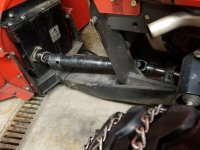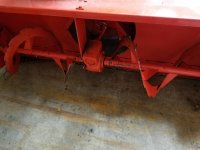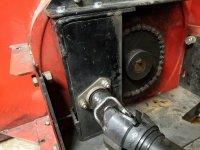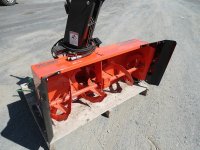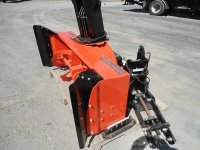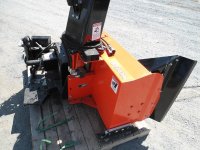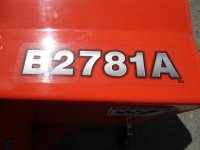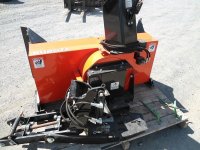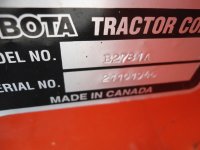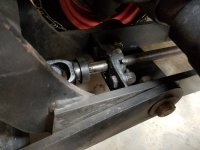Dave M7040
Elite Member
- Joined
- Dec 10, 2012
- Messages
- 2,757
- Location
- Williamstown Ontario Canada
- Tractor
- Kubota M7040 Nuffield 465
Also, I am running my blower at PTO Speed (not a slower speed). I do throttle it down when I engage it, but them throttle up before blowing snow. Failure is happening at light load on the motor and not a heavy snow load or when blowing debris.
JR
Can I make certain I understand your info.
I understand you to say that you have the part shown in black on your blower except that it is painted orange. Correct?
It is not the one with the Green arrow pointing at it in the photo that is failing?
Is the bolt shown by the green arrow just a normal bolt with no grooves in it?
My friend had a new blower installed on his tractor in December. It has the style with the black hub but everything is orange so a factory blower not a dealer modified one.
The photo below is of the spare shear bolts the dealer gave him.
The bolts with the grooves are for the auger.
The shorter grade 2 bolts with no grooves are for the fan hub.

Can you advise if your fan hub shear bolts are the same as the shorter ones with no grooves and yet you are experiencing shear bolt failure.
The slip clutch you are asking about is a heavy thing with a clutch disc sandwiched between two steel disks. The two steel disks are clamped together by springs. the clamping effect transfers power through the clutch disk.
You can adjust the point at which the disk slips by increasing or decreasing the tension on the springs.

Where you see them is on pto's for a bush hog which is experiencing drive-line shock loads all the time so rather than having frequent shear bolt failures the clutch slips, you just carry on.
I have never seen one on a snow blower and never ever on a front mounted blower. The clutches require maintenance to ensure they slip when needed and are not frozen together because if they are frozen expensive things break.
In looking at the photo of the spare shear bolts my friend has. It looks like the short bolts have grade 5 marking on the bolt head. I am going to ask him to take a photo of the bolt head as these bolts were given to him with the new blower
Dave M7040
